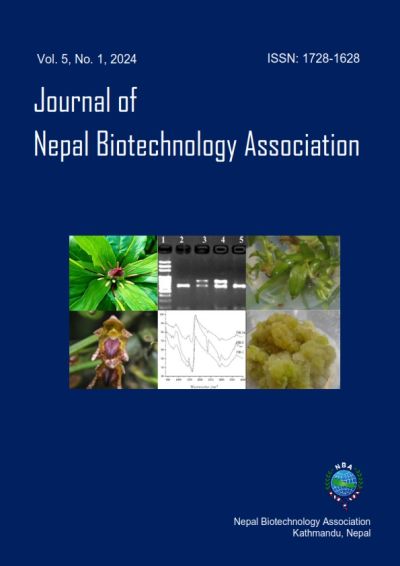In vitro Callus Regeneration and Chlorophyll Content Estimation in Glycine max (L.) variety from Uttarakhand, India
DOI:
https://doi.org/10.3126/jnba.v5i1.63744Keywords:
Callus induction, Chlorophyll content, Carotenoids, Glycine max, Mass propagationAbstract
Soybean (Glycine max) is considered one of the most substantial produced crops across the globe because of its high nutritional value. It is a great alternative for lactose-intolerant patients and vegans to fulfil their daily protein requirements. Soybean has various varieties depending upon the colour of their seed coat. In the past few years, the consumption of Soybean has increased which demands higher production, better yield, and better seed quality. Conventional propagation methods fail to fulfil such demands. The alternate method of plant tissue culture ensures rapid mass propagation, better yield, and quality of the plants. However, the technique is often beset with challenges of low-field performance of tissue culture-raised plants due to defective chloroplast machinery. The present study investigates the effect of various plant growth regulators (PGRs) on in vitro propagation of soybean cultivars from different regions of Uttarakhand, India, and their effect on chlorophyll content in the regenerated tissues.




